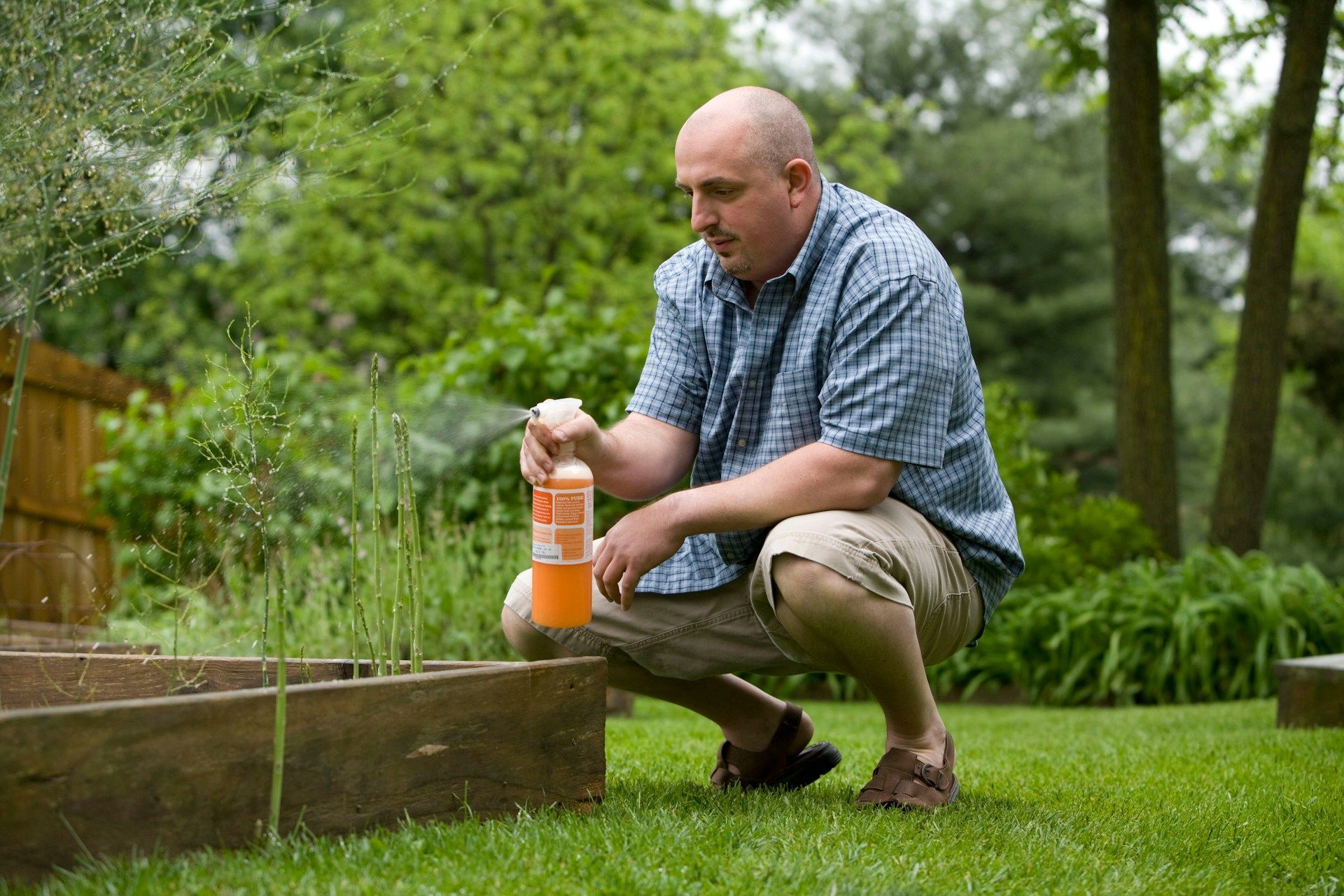Get Your Free Instant Online Quote Here
What Our Customers Are Saying

🟊🟊🟊🟊🟊
"Great service and fertilizer weed guys know what they're doing, very experienced! The best!"
Dan R.
East Brunswick

🟊🟊🟊🟊🟊
"Once I signed up for the mosquito preventative application, my family and I have been able to relax on our back deck for the first time in years."
Scott B.
Old Bridge
Button
🟊🟊🟊🟊🟊
"Got a prompt accurate quote, all details concerning pricing and treatment applications were expertly explained. Their program looks to me as a good value. My first treatment went exactly as they said it would."
Frank A.
Marlboro
🟊🟊🟊🟊🟊
🟊🟊🟊🟊🟊
"Great company with excellent service and lightning quick communication. Technologically ahead of the competition and professionally run."
Chris N.
East Brunswick
Button
🟊🟊🟊🟊🟊
"Healthy Lawn is a fantastic company! My lawn and landscaping look amazing. They have great customer service with knowledgeable and friendly employees. I would definitely recommend them."
Samantha L.
Matawan
Button
Flea and Tick Control: Protecting Your Pets and Family
Fleas and ticks are more than just a nuisance; they pose serious health risks to both pets and humans. These tiny pests can quickly turn your home and yard into a battleground if left unchecked. Understanding how to control fleas and ticks is essential for ensuring the well-being of your loved ones, both furry and human.
Fleas and ticks thrive in warm, humid environments, making summer and early fall peak seasons for infestations. Pets that spend time outdoors are particularly vulnerable, often bringing these pests into your home. Once inside, fleas and ticks can multiply rapidly, infesting not just your pets, but also carpets, furniture, and bedding.
Implementing effective flea and tick control strategies can protect your pets from discomfort and serious illnesses. It also shields your family from potential health risks. In this article, we will explore various methods to keep these pesky invaders at bay and offer practical tips for long-term prevention. By adopting the right measures, you can enjoy a safer, healthier living environment for everyone in your household.
Understanding Fleas and Ticks
Identification and Life Cycle
Fleas and ticks are tiny but dangerous pests that can cause big problems. Identifying them is the first step in controlling them. Fleas are small, wingless insects that measure about 1/8 inch in length. They have a flat body and dark brown color, making them hard to spot on pets with dark fur. Fleas move quickly and can jump long distances. Their life cycle includes four stages: egg, larva, pupa, and adult. A single flea can lay hundreds of eggs in its lifetime, making infestations difficult to control if not promptly addressed.
Ticks, on the other hand, are part of the arachnid family and have eight legs. They range in size from a pinhead to a pencil eraser. Ticks often latch onto pets or humans for a blood meal, but their initial bite is usually painless, allowing them to stay attached for several days. Common tick species include the dog tick and deer tick. Like fleas, ticks also have a life cycle that includes egg, larva, nymph, and adult stages.
Common Myths and Misconceptions
There are several myths about fleas and ticks that can lead to ineffective control methods. One common misconception is that fleas and ticks only infest dirty homes or pets. In reality, these pests are opportunistic and can invade any home, regardless of cleanliness. Another myth is that indoor pets are safe from fleas and ticks. Even if your pet rarely goes outside, these pests can hitch a ride indoors on clothing, shoes, or other pets.
Some people believe that over-the-counter flea and tick treatments are enough to keep their pets safe. While these products can be helpful, they are not always effective, especially if not used correctly. Professional advice can provide more tailored and effective solutions. Lastly, there's a misconception that fleas and ticks die off in winter. While it's true they are less active in colder months, they can still survive indoors and become a year-round problem.
Risks and Health Issues
Impact on Pets' Health
Fleas and ticks can wreak havoc on our pets' health. Flea bites cause itching and discomfort, leading to constant scratching and potential skin infections. Fleas are also carriers of tapeworms, which can infect pets if swallowed during grooming. Some pets may develop flea allergy dermatitis, a severe allergic reaction to flea saliva, resulting in red, inflamed skin, and hair loss.
Ticks pose their own set of health risks. They can transmit diseases like Lyme disease, which affects both pets and humans. Symptoms in pets include fever, fatigue, and swollen joints. Another concerning tick-borne illness is ehrlichiosis, which can cause fever, bleeding disorders, and lethargy in pets. Immediate veterinary attention is crucial if you notice these symptoms.
Risks to Human Health
Fleas and ticks don't just pose a threat to pets; they are a significant health risk to humans as well. Flea bites can cause itchy, red welts on the skin, and in some cases, they can trigger allergic reactions. Fleas can also transmit serious diseases like the plague and typhus, although these cases are rare.
Ticks are even more daunting due to the diseases they spread. Lyme disease is the most well-known tick-borne illness that affects humans, causing symptoms like fatigue, joint pain, and severe headaches. Early detection and antibiotic treatment are vital to prevent long-term complications. Another disease to be aware of is Rocky Mountain spotted fever, characterized by fever, rash, and muscle pain. If left untreated, it can be fatal.
Understanding the risks fleas and ticks pose to both pets and humans emphasizes the importance of effective control measures. By taking steps to manage these pests, we can protect the health and well-being of our entire family.
Effective Flea and Tick Control Methods
DIY Home Remedies
There are various home remedies we can use to combat fleas and ticks. One popular DIY method involves using natural ingredients like apple cider vinegar. Mixing equal parts of apple cider vinegar and water in a spray bottle creates a simple yet effective flea repellent. Spray this mixture onto your pet's fur, avoiding the eyes and open wounds. Another natural remedy is diatomaceous earth, a fine powder that can be sprinkled around the home and yard to eliminate fleas. Just make sure it's food-grade to ensure safety for pets and humans.
Essential oils such as lavender, eucalyptus, and citronella can also act as natural repellents. Adding a few drops to your pet's collar or bedding can keep fleas and ticks at bay. Finally, regular vacuuming and washing of pet bedding at high temperatures can help disrupt the life cycle of these pests, reducing their numbers significantly.
Professional Treatment Options
While DIY methods can be effective, sometimes they aren't enough for severe infestations. In such cases, professional treatments offer a more robust solution. Professional pest control services use specialized equipment and stronger insecticides that can target both adult fleas and ticks as well as their larvae. These treatments can provide longer-lasting protection and are tailored to the specific needs of your home and yard.
Professional services also conduct thorough inspections to identify problem areas and ensure all pests are eliminated. Treatments often include follow-up visits to make sure the infestation is completely under control. In addition, professionals offer advice on maintenance and preventive measures to keep your home flea and tick-free.
Preventive Measures for Long-Term Control
Yard Maintenance Tips
Maintaining your yard is crucial for long-term flea and tick control. We can start by regularly mowing the lawn and trimming bushes to reduce the shady, humid areas where these pests thrive. Dispose of any yard waste, such as leaf piles and grass clippings, which can serve as breeding grounds. Applying beneficial nematodes, small worms that feed on flea larvae, can be an eco-friendly way to control yard infestations.
Additionally, consider creating a barrier between wooded areas and your lawn with mulch or gravel. This discourages ticks from migrating into your yard. Installing outdoor pet enclosures can also limit your pet's exposure to flea and tick-infested areas. Regularly treating your yard with safe, effective insecticides during peak seasons can further safeguard your outdoor spaces.
Pet Care Practices
Keeping our pets safe from fleas and ticks requires consistent, proactive care. Regular grooming and inspection of your pets are essential. Brushing your pets frequently with a flea comb helps remove fleas and their eggs. Bathing pets with flea shampoos or natural alternatives keeps their fur clean and less attractive to pests. Monthly flea and tick preventative treatments, such as spot-on solutions and oral medications, provide long-lasting protection.
We should also wash our pet's bedding regularly in hot water to kill any fleas or ticks hiding there. Avoiding high-risk areas, like tall grasses and wooded areas, during peak flea and tick seasons can further reduce the risk.
Conclusion
Flea and tick control is essential for the well-being of our pets and family. These pests can cause discomfort and serious health risks, making it crucial to adopt effective control and preventive measures. Through a combination of DIY remedies, professional treatments, and long-term preventive strategies, we can ensure a safer, healthier environment.
Understanding the life cycle of fleas and ticks, recognizing the health risks, and implementing a comprehensive control plan helps keep these pests at bay. Regular yard maintenance and diligent pet care practices play a significant role in preventing infestations. For severe cases, professional pest control services offer a reliable solution.
Ready to protect your pets and family from fleas and ticks? Contact Healthy Lawn today to learn about our professional
flea and tick control services. Let's create a safer, healthier home for everyone.








